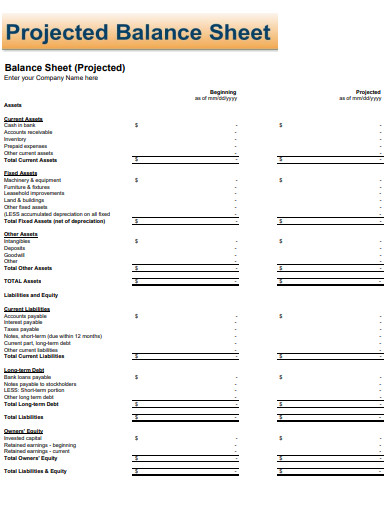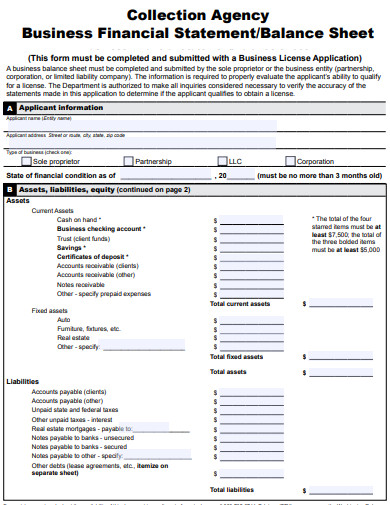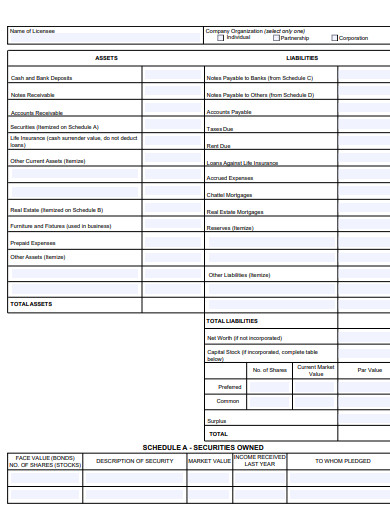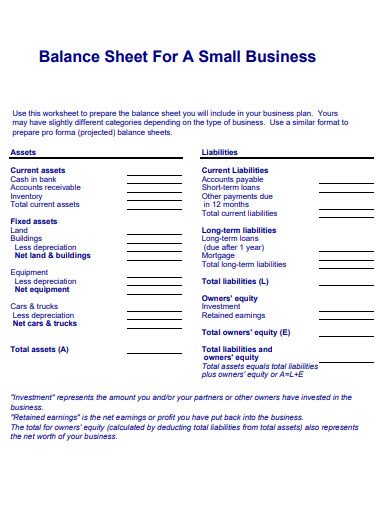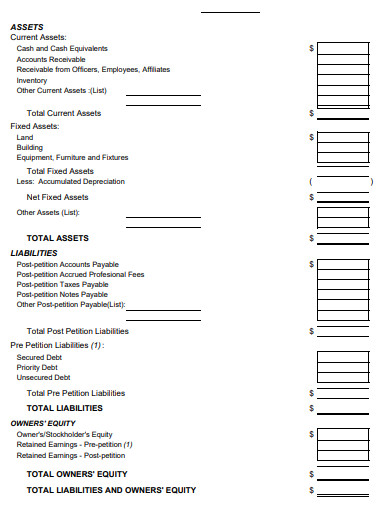You always need to secure a business balance sheet, whether a small business or a startup business. Especially for a fashion business, food catering, or brewery business, all industries must have such a document. This document is one of the essential papers that need to be invested in to avoid any financial risk throughout. Besides, it holds the capital structure and the future of a particular business.
4+ Business Balance Sheet Samples
1. Business Balance Sheet
2. Business Financial Statement Balance Sheet
3. Sample Business Balance Sheet
4. Small Business Balance Sheet
5. Business Monthly Balance Sheet
What Is a Business Balance Sheet?
A business balance sheet is a financial statement that apprises a company’s liabilities, shareholder equity, stock, and assets at a particular point in time. The sheets also provide the foundation for computing rates of return for investors and evaluating a company’s capital. In other words, the sheet is a financial statement that supplies an image of what a company holds and owes and the amount invested by shareholders. Moreover, it can be used with other important financial information to conduct basic analysis or calculate financial ratios. It is typically prepared at the end of set periods every quarter or annually.
How To Make a Business Balance Sheet?
Since a business balance sheet is one of the essential financial statements for every industry, you need to understand what goes into the balance sheet. It can tell you what to do about your financial budget and asset management. As you can see, depicting the total liabilities, assets, and net worth lets you quickly look at your financial health. At the same time, it also helps inform lenders or investors about your business. Do you need to prepare a business balance sheet? If that’s the case, you need to know and understand how sheets work, what makes them essential, and the steps to create a business balance sheet for your company.
1. Select the Reporting Date and Period
Since the sheet depicts a company’s total liabilities, assets, and equity on a specific date, typically referred to as the reporting date. Often, the reporting date will be the final day of the reporting period. So, if you traded once, you will report every quarter. At the same time, those who often use December 31st can choose any date.
2. Determine Your Assets
Once you’re done identifying your reporting date, you’ll need to tally your assets. A balance sheet commonly lists assets in two ways: individual line items and total assets. In any case, the company will often split assets into the following line items: current and non-current assets.
3. Identify Your Liabilities
This time, you need to specify your liabilities. Again, the company should organize them into line items and totals as current(accounts payable, accrued expenses, deferred revenue, latest portion of long-term debt) and non-current liabilities (deferred revenue, lease obligations, debt).
4. Compute The Shareholder’s Equity
Shareholders’ equity will commonly be pretty straightforward if a single owner privately carries a company or organization. If it’s publicly held, this calculation may become more complicated depending on the stock-issued types. The line items found in this section of the balance sheet include the common stock, preferred stock, treasury stock, and retained earnings.
5. Combine The Total Liabilities To The Total Shareholder’s Equity
To confirm the balance sheet is balanced, it will be essential to compare total assets against total liabilities plus equity. You’ll need to add liabilities and shareholders’ equity together to execute this.
Why Is a Business Balance Sheet Essential?
The business balance sheet is an important tool used by investors, analysts, and regulators to comprehend the existing financial health of a business.
What Are the Benefits of a Balance Sheet?
A balance sheet indicates a company’s financial position at a particular point in time. As opposed to an income statement which reports financial information over some time, a balance sheet is used to specify the health of a company on a specific day.
What are the other ways of creating a business balance sheet?
You can create a business sheet from scratch or look for a ready-made template online.
In any case, you don’t need to have an accountant or be prominent with numbers to make a balance sheet for your business. Your accounting product can draft one for you automatically based on your provided data. Or you can utilize a template, such as one from our site.
Related Posts
FREE 20+ Training Sheet Samples in PDF | MS Word
FREE 20+ Employee Sheet Samples in PDF | MS Word
FREE 10+ Employee Attendance Sheet Samples in PDF
FREE 12+ Balance Sheet Formats in MS Word | PDF | Excel
FREE 5+ Construction Bid Sheet Samples in PDF | MS Word | Excel
FREE 15+ Construction Timesheet Samples in PDF | MS Word
FREE 26+ Construction Sheet Samples in MS Word | Google Docs | Excel
FREE 20+ Continuation Sheet Samples in PDF | MS Word
FREE 25+ Program Sheet Samples in MS Word | Google Docs | Pages | PDF
FREE 33+ Student Sheet Samples in PDF | MS Word
FREE 32+ Planning Sheet Samples in PDF | MS Word
FREE 10+ OC Sheet Samples in PDF
FREE 10+ Beat Sheet Samples in PDF
FREE 3+ Paper Sign Up Sheet Samples in PDF
FREE 50+ Summary Sheet Samples in MS Word | Google Docs | Google Sheets | Excel | PDF

